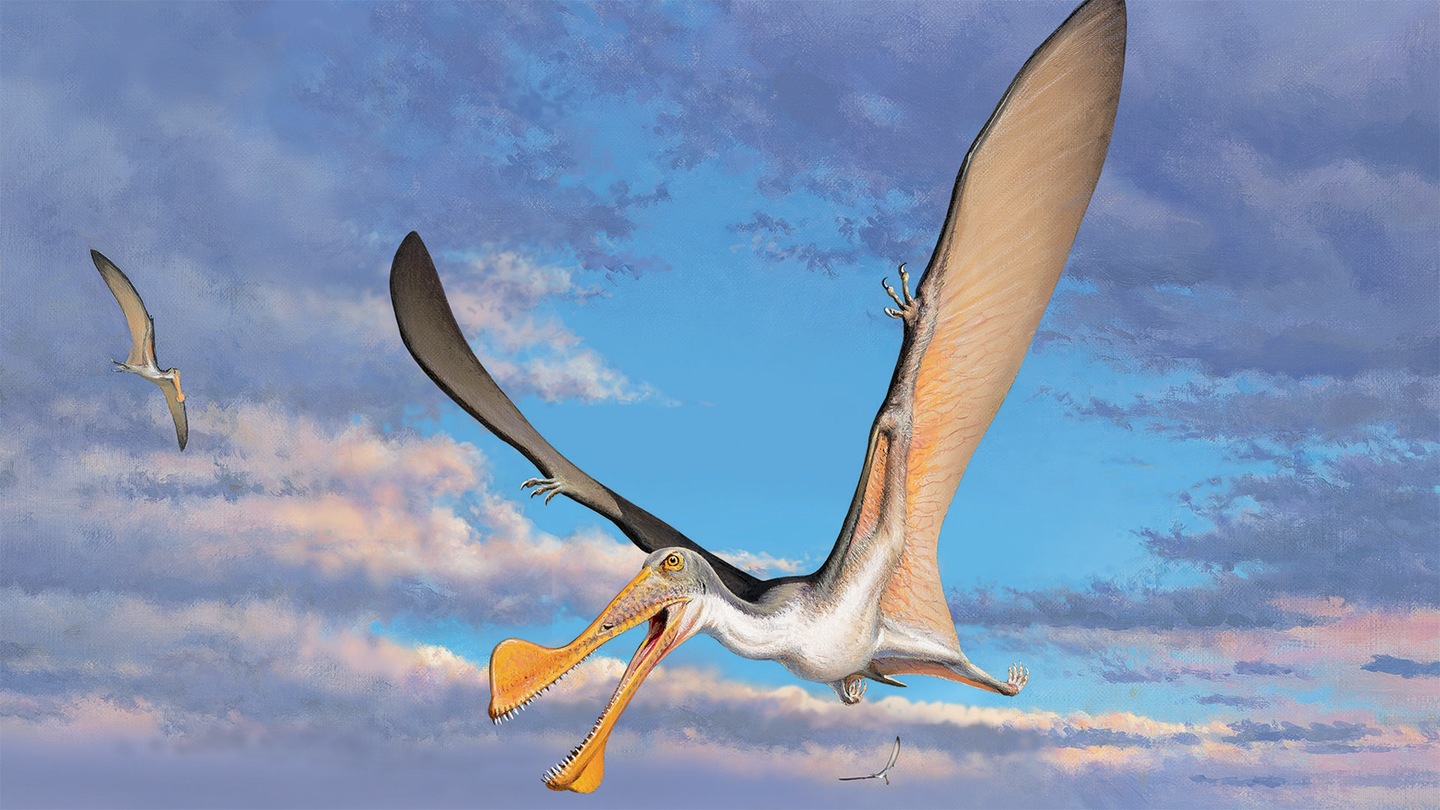
The fictional and deadly Jurassic Park has nothing on the real-life Dinosaur Cove on the southern tip of Victoria, Australia. Using bones from the fossil-filled hotspot, a team of paleontologists have confirmed that pterosaurs—more commonly known as pterodactyls—flew over Australian skies as far back as 107 million years ago. Their findings are detailed in a study published May 31 in the journal History Biology.
[Related: This pterosaur ancestor was a tiny, flightless dog-like dinosaur.]
The team examined two pieces of prehistoric bone that were extracted from Dinosaur Cove over 30 years ago. The bones belonged to two different pterosaurs, and were examined by experts from Curtin University in Perth and Melbourne’s Museums Victoria. A partial pelvis bone belonged to a pterosaur with a wingspan over 6.5 feet, and the smaller wing bone belonged to a juvenile pterosaur. These bones turned out to be the oldest remains of the giant winged reptiles ever recovered in Australia, which is better known for its larger sauropod fossils.
Closely related to dinosaurs, pterosaurs soared through the skies during the Mesozoic Era, about 252 million years ago.
“During the Cretaceous Period (145–66 million years ago), Australia was further south than it is today, and the state of Victoria was within the polar circle—covered in darkness for weeks on end during the winter. Despite these seasonally harsh conditions, it is clear that pterosaurs found a way to survive and thrive,” study co-author and Curtin University PhD student Adele Pentland said in a statement.
According to Pentland, remains of pterosaurs are a rare find worldwide. Even fewer remains have been discovered at regions that were once high paleolatitude locations, including Victoria. She told CNN that less than 25 sets of pterosaur remains from four species have been found in Australia since the 1980s, compared to more than 100 sets in countries like Argentina and Brazil.
“So these bones give us a better idea as to where pterosaurs lived and how big they were. By analyzing these bones, we have also been able to confirm the existence of the first ever Australian juvenile pterosaur, which resided in the Victorian forests around 107 million years ago,” said Pentland.
[Related: The biggest animal ever to fly was a reptile with a giraffe-like neck.]
The specimens were found in the 1980s in a Dinosaur Cove expedition led by paleontologists Tom Rich and Pat Vickers-Rich. Their discovery of big-eyed dinosaurs along this area of coastline helped spark a major shift in how dinosaurs were more generally perceived. These “dinosaurs of darkness” gave paleontologists a glimpse of survival without sunlight and reframed questions about whether dinosaurs were warm-blooded creatures.
“These two fossils were the outcome of a labor-intensive effort by more than 100 volunteers over a decade,” Tom Rich said in a statement. “That effort involved excavating more than 60 meters [196 feet] of tunnel where the two fossils were found in a seaside cliff at Dinosaur Cove.”
The biggest pterosaur scientists know of so far is Quetzalcoatlus northropi, which was found in Texas. Since everything is bigger in Texas, this pterosaur had a wingspan of about 32 to 36 feet. Australia’s largest pterosaur is the Thapunngaka shawi. It was discovered in 2021 by a team from the University of Queensland and boasts a wingspan of roughly 22 feet.
The post Dinosaur Cove reveals a petite pterosaur species appeared first on Popular Science.
Articles may contain affiliate links which enable us to share in the revenue of any purchases made.
from | Popular Science https://ift.tt/U51Lof7




0 Comments